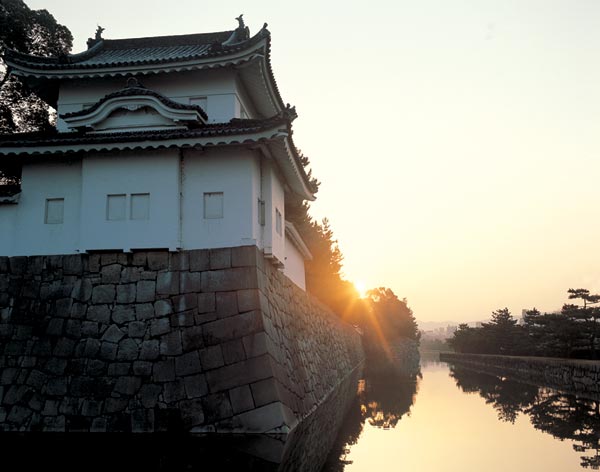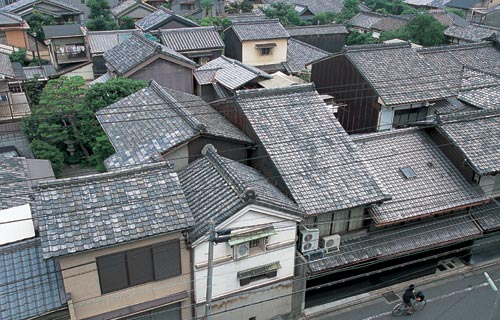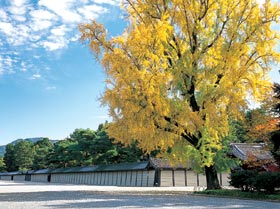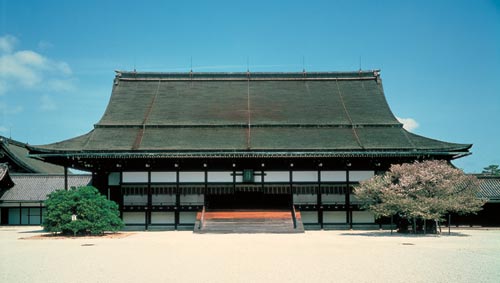| Web Japan > NIPPONIA No.30 > Special Feature* |
|
|
|
NIPPONIA No.30 September 15, 2004
|
|
Special Feature*
In the Heart of the Old Capital
The warlord Toyotomi Hideyoshi (1537-1598) unified Japan. One of his infrastructure projects for Kyoto was to surround the city with an earthen embankment. The urban area inside the embankment was called Rakuchu, and this name became synonymous with that of Kyoto. The large area once encircled by the embankment contains many sites representative of the old Imperial capital.
Written by Sakagami Yasuko, Photos by Mizuno Katsuhiko
Other photo credits: Sekai Bunka Photo |
Nijo Castle
Constructed in 1603 by the Shogun, Tokugawa Ieyasu. It was here that the last Shogun, Tokugawa Yoshinobu, agreed to return power to the Imperial Court. The Shogun's palace in the central compound, called Honmaru Goten, was lost in a huge fire in 1788. The present building, which replaced it, was brought here from the Kyoto Imperial Palace. Ninomaru Palace in the secondary compound is a National Treasure. Inside are fusuma sliding doors with stupendous paintings done by the Kano Family, a prime example of the Momoyama artistic style. Tourists from Japan and abroad alike gain a deeper appreciation of history at the castle.

|
||||
Nishijin District
For a decade during the 15th century, warlords waged a civil war, with the Eastern Army fighting against the Western Army. The Western Army's military headquarters (hon-jin) was established in northeastern Kyoto, and this explains the name of the district (nishi means west). Later, weavers settled here and began making a new type of fabric now admired worldwide, called Nishijin-ori. Many of the old tradesmen's houses remain to this day, keeping alive the atmosphere of old Japan. Some have been renovated and given new life as restaurants and studios for artists practicing different genres. In Nishijin, the old and the new exist side by side.
 |
||
|
Kyoto Imperial Palace
 After the Emperor's palace was destroyed through natural disaster and civil war, the official residence of the Imperial Family was moved about 2 km northwest to this location in 1331, and remained here for more than 500 years, until 1868. Two of the major buildings were reconstructed in 1855: the Seiryo-den Hall once served as the Emperor's living quarters, and the Shishin-den Hall (photo below) is used for important ceremonies (for example, the enthronement ceremony for each successive Emperor is held there). Kyoto Imperial Park (photo above left) surrounds the former palace. It is open to the public, but permission is required to enter the palace compound.
 |
||||
|
|
||||||||
|